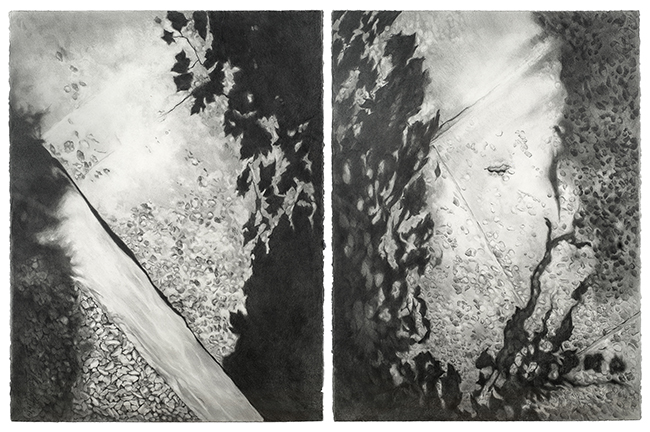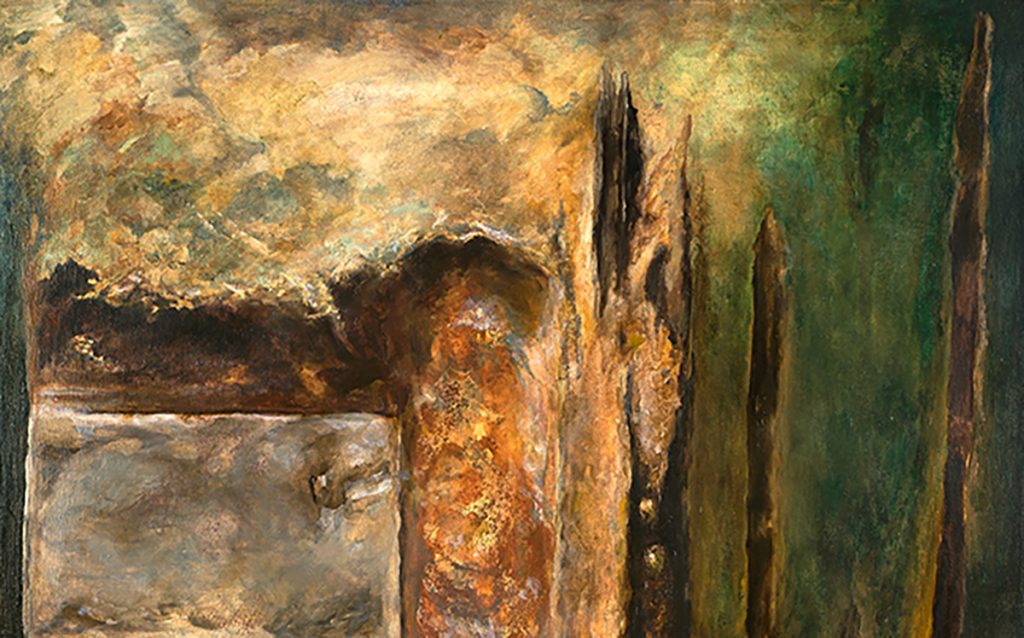Lidia Paladino’s creative journey has been one of continual discovery and growth. She started out with a focus on drawing and engraving, later turning her attention to textile design, where she spent years perfecting her craft. After taking a break, Paladino returned to engraving, revitalizing her approach by incorporating modern techniques that have significantly expanded her practice. In 2003, she earned the First Municipal Prize for Engraving, a turning point in her artistic career. Paladino has also developed a fascination for diverse materials, experimenting with handmade paper and integrating found objects into her relief works. Her early engraving, Presencias (1995), stands as a testament to her technical skill, particularly her use of the burin and poupee methods. Captured in a photograph by Pablo Messil, the piece illustrates Paladino’s evolution as an artist within the world of engraving.

Paladino’s philosophy centers on the idea that everything in life is interconnected, constantly shifting. She believes that “things are not separate; they are part of our body and spirit,” a concept that weaves through all her works. By blending materials, she explores themes of memory, transformation, and impermanence. Discarded materials become her symbols of time, change, and the stories hidden in forgotten objects. Her work is more than an aesthetic endeavor—each piece is an investigation into the relationship between the self and the material world.
Her 2006 piece Entre Hierros exemplifies this. Using oil paint and recycled materials, Paladino created a 100 x 100 cm work that captures the passage of time as it leaves its marks on objects. For her, relief work is a tactile experience, where the materials hold a memory of their own. The texture in Entre Hierros communicates the idea of time’s physical impact, showing how materials are both shaped by and shape the world. Touch and texture are central to Paladino’s pieces, giving her work a physical presence that draws viewers into its layered meanings.

Paladino’s dedication to engraving reflects her love of the intricate process. She approaches the medium with both patience and creativity, pushing the boundaries of two-dimensional art. Through engraving, she creates atmospheres that invite deeper engagement, inviting viewers to lose themselves in her finely detailed compositions.
In her work De la serie Otros Mundos: Inaprehensible I – II, Paladino combines etching and poupee techniques to produce two plates, each 80 x 50 cm. Her careful layering of lines, planes, and transparency gives the works depth and dimension, creating a balance between the external and internal worlds. This balance is a hallmark of her art, where the interplay between form and space is carefully orchestrated to express deeper meanings.

Her skill with graphite is just as impressive, seen in her pieces Serie de la Vida I – II (2011). These large-scale drawings (76 x 110 cm) explore form and structure with precision. Much like her engravings, these works balance light, shadow, space, and object in a dance of detail that draws the viewer into its subtleties. The fluidity of her lines in graphite carries the same tactile energy present in her other works, bridging her approaches across mediums.
For Paladino, her connection to materials is integral to her work. Nature is a constant source of inspiration, and she observes the natural world with a deep sense of curiosity. Recycled materials are not simply components of her art—they are its essence. These objects carry history and memory, becoming key to her exploration of cycles in life, decay, and regeneration.
Paladino’s work is a process of transformation, using discarded materials to create pieces that feel timeless and grounded. Her art exists as a dialogue between internal reflections and external realities, with materials acting as a bridge between the two. Each piece she creates is alive with texture, form, and the story of its own making.
Through her work, Lidia Paladino captures the transient nature of existence, weaving together memory, material, and movement. Whether through engraving, painting, or relief, she invites us to engage with the deeper aspects of life, reminding us that art—and existence itself—are ever-evolving.

